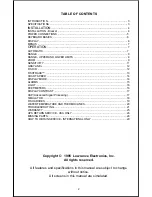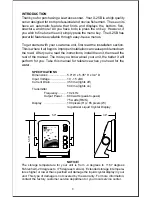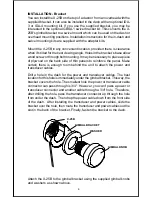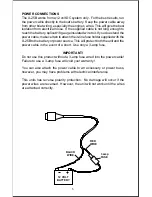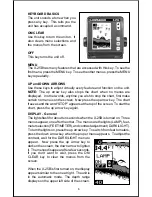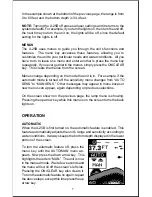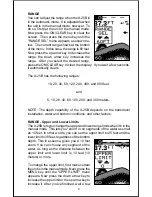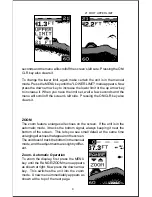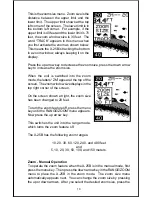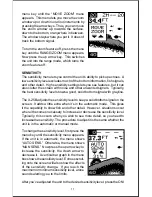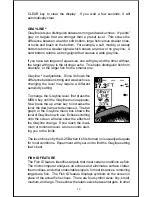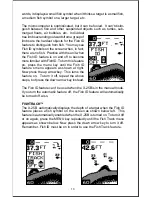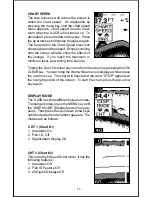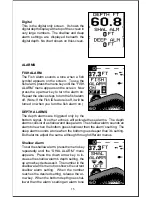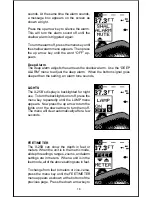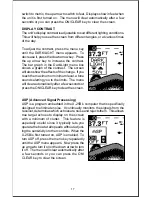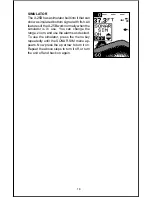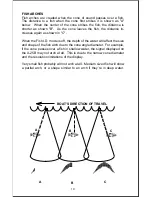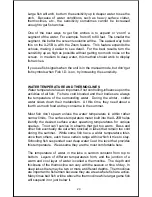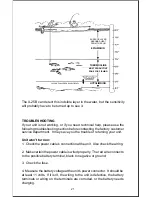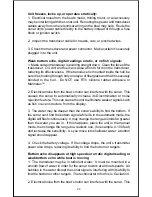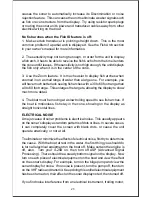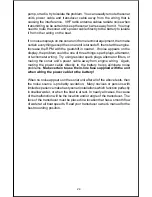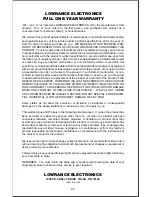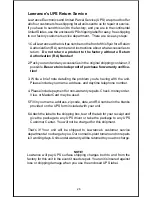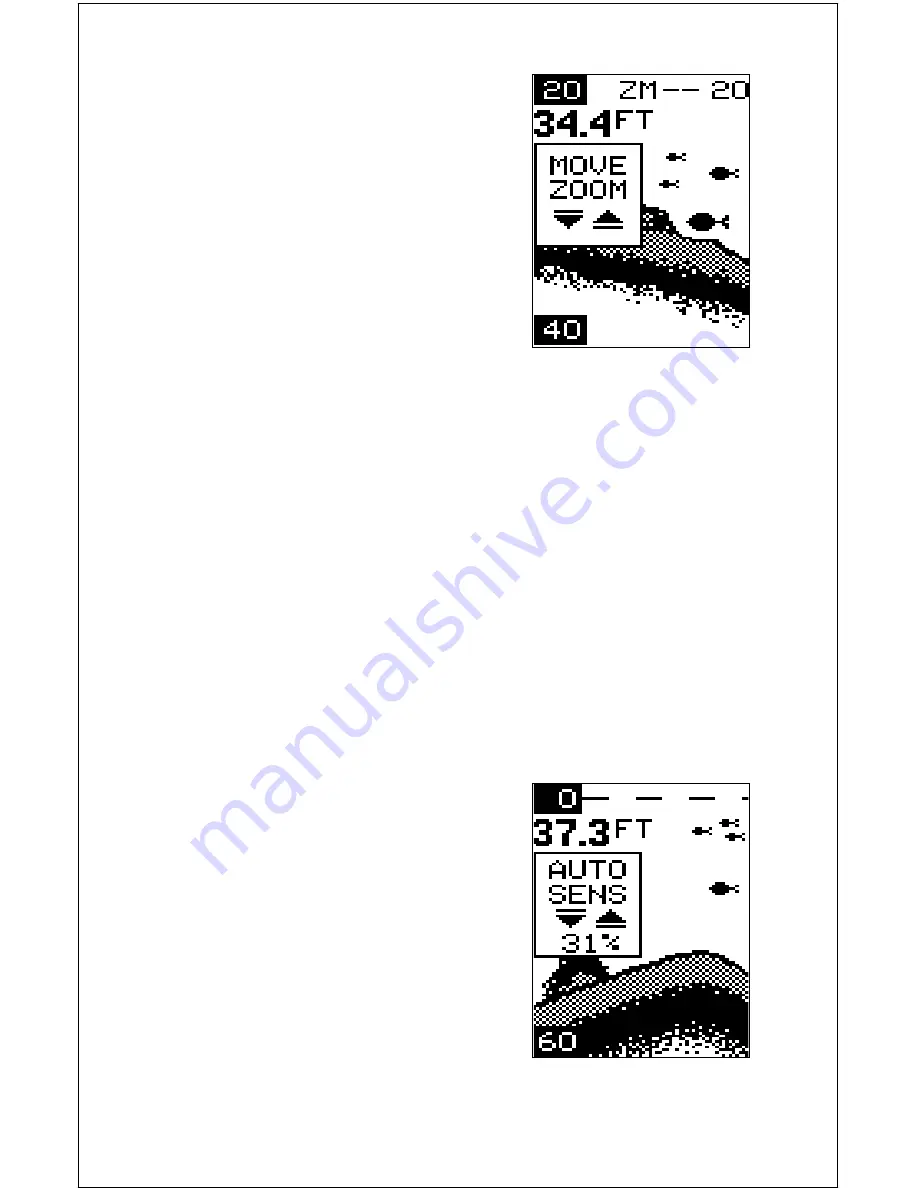
11
menu key until the “MOVE ZOOM” menu
appears. This menu lets you move the zoom
window up or down in
one foot
increments by
pressing the arrow keys. Thus, you can move
the zoom window up towards the surface,
down to the bottom, or anywhere in between.
The window stays where you put it. It doesn’t
track the bottom signal.
To turn the zoom feature off, press the menu
key until the RANGE/ZOOM menu appears.
Now press the up arrow key. This switches
the unit into the range mode, which turns the
zoom feature off.
SENSITIVITY
The sensitivity menu lets you control the unit’s ability to pick up echoes. A
low sensitivity level excludes much of the bottom information, fish signals,
and other detail. High sensitivity settings lets you see features, but it can
also clutter the screen with noise and other unwanted signals. Typically,
the best sensitivity level shows a good, solid bottom signal with grayline.
The X-25B adjusts the sensitivity level to keep a solid bottom signal on the
screen. It adds a little extra when it’s in the automatic mode. This gives
it the capability to show fish and other detail. However, situations occur
where it becomes necessary to increase or decrease the sensitivity level.
Typically, this occurs when you wish to see more detail, so you need to
increase the sensitivity. The procedure to adjust it is the same whether the
unit is in the automatic or manual mode.
To change the sensitivity level, first press the
menu key until the sensitivity menu appears.
If the unit is in automatic, the menu shows
“AUTO SENS.” Otherwise, the menu shows
“MAN SENS.” Now press the up arrow key to
increase the sensitivity, the down arrow to
decrease it. A vertical bar graph in the menu
box shows the sensitivity level. Echoes scroll-
ing onto the screen will also show the effects
of the sensitivity change. If you reach the
maximum or minimum sensitivity level, a tone
sounds alerting you to the limits.
After you’ve adjusted the unit to the desired sensitivity level, press the ON/


